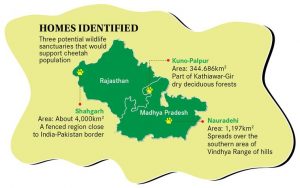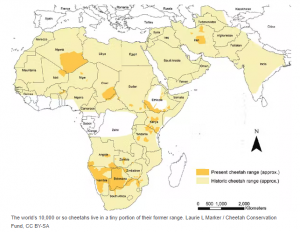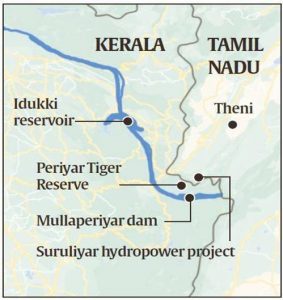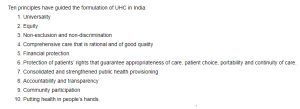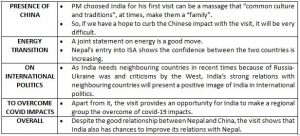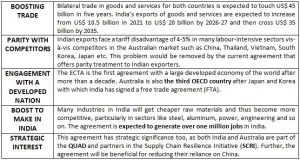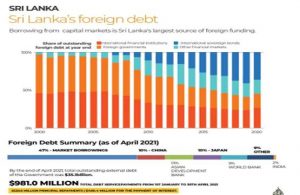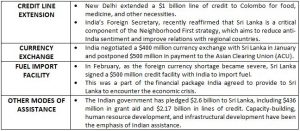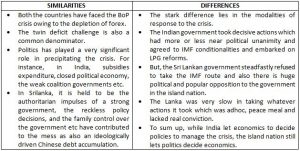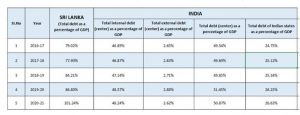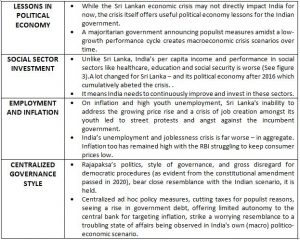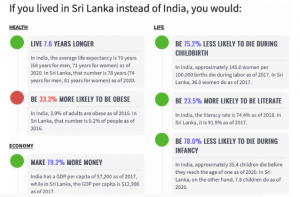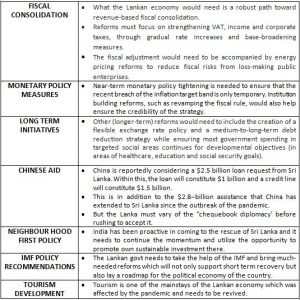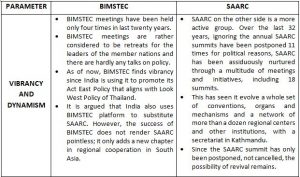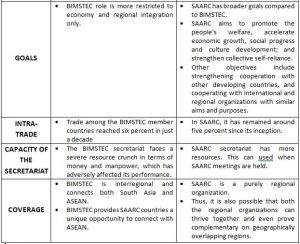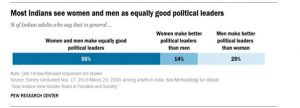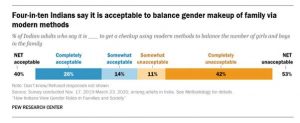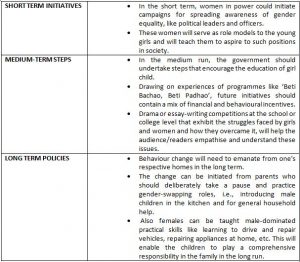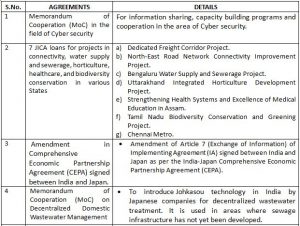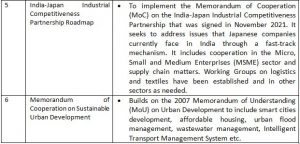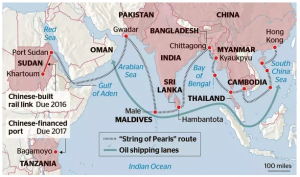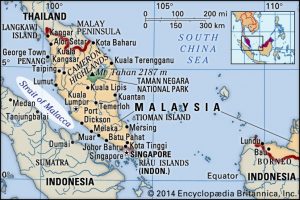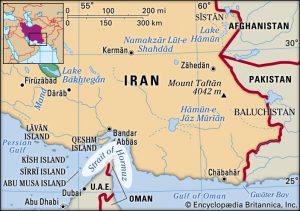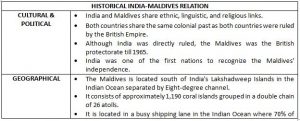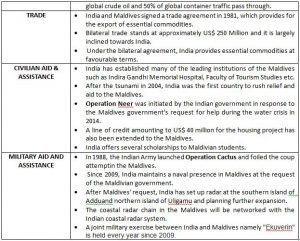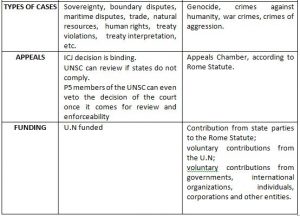DAILY CURRENT AFFAIRS (MAY 06, 2022)
THE SOCIETY, ART, AND CULTURE
1. LEPAKSHI TEMPLE: ON UNESCO WORLD HERITAGE SITES TENTATIVE LIST
THE CONTEXT: As of today, India is home to 40 UNESCO World Heritage sites. Before these sites gain World Heritage status, they form a part of a tentative list formulated by the state and reviewed by several advisory bodies before The World Heritage Centre makes a final decision. In 2022, the tentative list has three new additions: Lepakshi temple is one of them.
THE EXPLANATION:
- Located in Rayalaseema (Sri Satya Sai district) in Andhra Pradesh, it is a marvel in stone, and appeals equally to tourists and history and heritage enthusiasts.
- The Veerabhadra Swami temple here, which has found a place on UNESCO’s tentative list of world heritage sites in India for 2022, is the focal point.
- Situated atop the Kurmasailam (tortoise-shaped) hill, it is a glorious example of the much-celebrated Vijayanagara architecture.
- The Ramayana link: The name of the place itself is linked with the Ramayana. Legend has it that Jatayu fell at this spot after Ravana cut its wings when he tried to prevent Sita’s abduction. Rama stumbled upon the bird
- when searching for Sita. After the injured bird narrated what had happened, Rama coaxed him to rise again, “le, pakshi” (rise, bird in Telugu).
- A recent tourist addition to Lepakshi is a colossal concrete Jatayu statue (in flashy paint) on a hillock in JatayuPark, just before you take a turn off the highway to enter the temple.
- The Jatayu looks over a marvellously sculpted six-meter tall Nandi wearing layers of bells and ornaments. It is said to have been carved out of a monolith. Like the temple, it dates back to the 16th century.
- As one goes around the Veerabhadra Swami temple, what catches the eye first are the long pillared halls. Intricate carvings of yalis, flowers, trees, animals, yakshas, and yakshis can be seen on each pillar.
- For every part of the temple, there are two layers of stories — one that links it to incidents in the Ramayana, and the other talks about life during the reign of the Vijayanagara kings.
- The imposing Nagalinga statue, with the seven-hooded serpent coiled around a linga on a five-foot platform, is an awe-inspiring sight.
- The nearly six-foot Ganesha behind the Nagalinga, and surrounded by an incomplete mantapa, reminds one of the Sasivekalu and KadlekaluGanesha statues in Hampi – the rocky terrain and the fact that it also belongs to the Vijayanagara empire establishes the link.
- The entire temple complex was believed to be re-built by Virupanna, and his brother Veeranna under the rule of Vijayanagara king AchyutaDevaraya. The brothers were officers/governors in the Penukonda region.
- When one enters the main shrine, the 70-pillared nrutyamantapa, the detailed and beautiful carvings on them depict gods and artists playing musical instruments and dancers in various poses and mudras. The high ceiling is filled with long panels of fresco paintings.
ABOUT FRESCO PAINTING
- Fresco Paintings are evident on the roof of Sri Veerabhadra Swami temple.
- The paintings are somewhat similar to the Ellora paintings in terms of the colour palette of brown, ochre, red, off-white, and black, but the style is very different.
- The detailing of the jewellery, clothing, and hairstyle of the women are fascinating; the unique elongated headgear of the men, including gods, is another eye-catching feature. (I see resemblances to Kalamkari’s work.)
- The central portion of the roof near the garbhagriha has a mural of Veerabhadra, flanked by Virupanna and Veeranna worshipping him. Measuring 23 feet by 13 feet, it is said to be one of the largest murals in Asia.
- There are also representations of at least 14 avatars of Shiva, as well as scenes from the Ramayana and Mahabharata.

THE ENVIRONMENT AND ECOLOGY
2. HATHI MITRAS: CHHATTISGARH’S SOLUTION TO TACKLING HUMAN-ELEPHANT CONFLICT
THE CONTEXT: Village residents known as hathimitras or ‘friends of elephants’ dedicatedly track pachyderm movements to help prevent casualties and crop loss.
THE EXPLANATION:
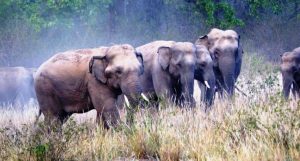
- India’s 27,000 elephants often run into trouble with its burgeoning human population. The situation is especially worrisome in Jharkhand, Odisha, West Bengal, and Chhattisgarh, where a number of factors have increased conflict. But Chhattisgarh seems to have found a solution — hathimitras.
- These residents of villages affected by human-elephant conflict work are engaged by the state forest department to dedicatedly track elephants, warn people about their movement and send updates in a Whatsapp group created for the purpose.
- Their services are important as Chhattisgarh has emerged as a new battleground for human-elephant conflict.
- The movement became regular from 1995 onwards. Slowly, the animals started making the state their permanent home. Today, there are about 275-320 elephants in the state.
- Today, elephants enter Chhattisgarh from Odisha and Jharkhand in search of suitable habitats. Hence, the central and northern parts of the state witnessed an escalation of casualties and crop damages.
- Hathi Mitras agree that most casualties occur due to a lack of knowledge about elephant behaviour and movement. Encounters mostly take place at night when visibility is low.
- People are asked to maintain a safe distance and not disturb the animals to prevent human deaths. But accidents are inevitable.
- The awareness campaigns carried out by hathimitras reduced the craze for clicking photos of elephants and taking selfies with them. A person died while trying to take a selfie with wild elephants in 2017.
- Hathi Mitra though they are useful, their potential has not been fully exploited. But these workers know how to trek inside jungles safely and get a monthly payment.
THE GOVERNANCE
3. WHO ESTIMATES 4.7 MILLION COVID-LINKED DEATHS IN INDIA
THE CONTEXT: World Health Organization(WHO)estimates 4.7 million covid-linked deaths in India.
THE EXPLANATION:
- There were likely 47 lakh deaths, directly or indirectly attributable to COVID-19, in India in 2020 and 2021, a report by the World Health Organization (WHO) said on Thursday. These are the highest, by far, for any country and makeup nearly a third of the 15 million such deaths estimated by the agency globally.
- India officially estimated only 4.8 lakh cumulative deaths linked to COVID-19 as of December 2021, which implies that the WHO estimate is nearly 10 times the government count. As of May, India’s official COVID-19 death toll is 5.2 lakh.
- Minutes after the WHO released its estimate, India reiterated its “objection to the methodology” used.
- “These sobering data not only point to the impact of the pandemic but also to the need for all countries to invest in more resilient health systems that can sustain essential health services during crises, including stronger health information systems,” WHO Director-General Tedros Adhanom Ghebreyesus said. “WHO is committed to working with all countries to strengthen their health information systems….”
- Excess deaths are calculated as the difference between the number of deaths that have occurred and the number that would be expected in the absence of the pandemic based on data from earlier years. Excess mortality includes deaths associated with COVID-19 directly or indirectly (due to the pandemic’s impact on health systems).
4. COSTING NORMS FOR MID-DAY MEALS, ANGANWADIS NOT REVISED DESPITE FOOD INFLATION
THE CONTEXT: Schools and Anganwadi centers (AWC) are finding it difficult to effectively run programmes that address the nutritional needs of children and mothers. This is because the government has not revised costing norms for mid-day meals despite inflation.
THE EXPLANATION:
- Schools and Anganwadi centers (AWC) are finding it difficult to effectively run programmes that address the nutritional needs of children and mothers. This is because the government has not revised costing norms for mid-day meals despite inflation, teachers and activists said.
- There is an urgent need to re-evaluate the cooking cost of programmes such as the PM-Poshan (Pradhan Mantri Poshan Shakti Nirman), the Centre’s flagship mid-day meal scheme, according to teachers.
- The last revision was done in May 2020, when it was increased from Rs 4.48 to Rs 4.97 per student per school day for primary (Classes 1-5) and Rs 6.71 to Rs 7.45 for upper primary (Classes 6-8).
- Ideally, the central government is supposed to revise cooking costs annually, to offset the impact of inflation on food items.
- Under PM-Poshan, the nutritional norm per child per day is 450 calories and 12 grams protein for primary class students and 700 calories and 20 grams protein for upper primary class students.
- Similarly, cost norms for supplementary nutrition in Anganwadis were also revised last in October 2017: From Rs 6 to Rs 8 for children between 6-72 months, from Rs 9 to Rs 12 for severely malnourished children, and from Rs 7 to Rs 9.50 for pregnant women and nursing mothers.
- According to some food rights activists the mostAnganwadis, cooked meals have not started till now after they were stopped during the first COVID-induced lockdown in 2020.
- In the national capital, Delhi, hot cooked meals were started just two days ago on May 2, after a gap of two years.
- Earlier, the government had reduced the budgetary allocation to PM-Poshan — from Rs 11,500 crore in 2021-22 to Rs 10,233.75 crore in 2022-23.
- According to the national coordinator for the Right to Food Campaign the reduced allocation, along with the current food inflation will be a big challenge for India in its fight against malnutrition.“The nutritional aspect has been reduced to just wheat and rice,” they said.
- A survey by the Right to Food Campaign released in February 2022, covering 6,697 respondents across 14 states, found that 41 percent of households had reported that the nutritional quality of their diet had deteriorated, compared to pre-pandemic levels.
- Some 64 percent had reported that their consumption of pulses had decreased, while 73 percent reported that their consumption of green vegetables has decreased.
THE INTERNATIONAL RELATIONS
5. INDIA-FRANCE PARTNERSHIP
THE CONTEXT: Prime Minister of India and French President Emmanuel Macron agree to work together to expand relations.
THE EXPLANATION:
- Prime Minister of India and French President Emmanuel Macron held extensive discussions on a range of bilateral and pressing global issues, including the raging conflict in Ukraine, the situation in the Indo-Pacific, and terrorism.
- The two leaders agreed on a blueprint to work together in making the India-France strategic partnership a force for the global good.
- In a joint statement, India and France underscored that the long-standing armament cooperation is testimony to the mutual trust between the two sides. Both sides also agreed to work jointly to increase the mobility of students, graduates, professionals, and skilled workers while strengthening their efforts to combat irregular migration.
THE ECONOMIC DEVELOPMENT
6. IMPACT OF WIDENING TRADE DEFICIT
THE CONTEXT: The Widening trade deficit puts more pressure on the rupee and spurs growth-retarding inflation.
THE EXPLANATION:
- Official data on India’s merchandise trade for April give a reason for cheer at first glance. Emerging from a record export performance during the just-concluded financial year, outward shipments for the month rose 24.2% from a year earlier, with electronics and chemicals showing healthy expansion, while petroleum products more than doubled.
- However, imports continued to outpace exports, growing by 26.6% to broaden the goods trade deficit, which widened to $20.07 billion from $18.5 billion in March. The trade deficit — the extent to which the import bill exceeds export receipts — worryingly breached $200 billion for a rolling 12-month period for the first time in April, impacted predominantly by petroleum imports of $172 billion. Global crude oil prices have surged by more than 40% in 2022 in the wake of Russia’s war on Ukraine, swelling the import bill.
- The early onset of the Indian summer, with a heatwave, has bolstered power demand, setting the pace for coal imports, which grew 136% last month, notwithstanding record output by key domestic supplier Coal India. For the first time ever, the Ministry of Power has set timelines for States to import coal over the next few months, a far cry from the 16% year-on-year decline in imports of the fuel in the April 2021-January 2022 period and a clear portent that the bill for overseas purchases of coal is also set to swell.
- Monitoring the trade deficit is crucial as this has a direct bearing on the current account deficit (CAD). Disconcertingly, foreign direct investment, which typically helps bridge the CAD, has seen a moderation. And, the wider the CAD, the greater the downward pressure on the rupee, which has already weakened considerably since the conflict in eastern Europe began in February.
- A weaker rupee, in turn, makes imports costlier, potentially widening the trade deficit, and thus triggering a vicious cycle. The RBI has sought to steady the rupee against wild swings, evident in the dip in foreign exchange reserves to $600.4 billion (April 22), from $640 billion just six months earlier. But a central bank can draw on the reserves to ease any rupee weakening only to a limited extent.
- The RBI also has its hands full with the battle against imported inflation as global commodity prices remain sharply elevated. To help avoid added stress, the Government must consider additional incentives for exports, while encouraging local production of items that strain the import bill.
- The coal crisis could have been averted with better-advanced estimates of power demand as the country emerged from the worst of the pandemic, and optimal allocation of coal-carrying rail wagons. Policymakers can ill afford to let their guard down on trade imbalances and risk growth retarding inflation and more pressure on the rupee.
7. COAL SHORTAGE AND INDIA’S LOOMING POWER CRISIS
THE CONTEXT: Due to several factors, India is staring at a coal crisis, with stock critically low at 108 of its 173 thermal power plants. The Indian Railways has cancelled trains to prioritise the delivery of coal rakes across the country.
THE EXPLANATION:
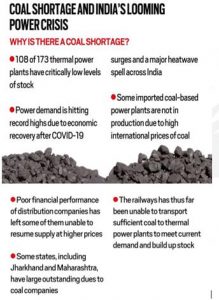
- International coal prices started reaching record highs in 2021 because of the rise in industrial demand, international price fluctuations, and the Russian invasion of Ukraine; all of this has seriously affected India’s coal imports.
- On April 28, 2022, India canceled several passenger trains to allow for faster movement of coal carriages. The Indian Railways are also planning to add 100,000 more wagons to their fleet and construct dedicated freight corridors to deliver goods faster.
- On the other hand, Delhi’s power minister claims that its power plants are left with less than a day of coal which can cause blackouts and affect crucial services like the Metro and government hospitals. The country is facing a critical coal shortage.
- Coal reserves at India’s power plants have declined almost 17 percent since the start of April 2022 and are barely a third of the required levels. But the question is, why?
- Seventy percent of India’s power demand is met by thermal power plants. The country has both, large-scale domestic and imported coal reserves to meet these enormous requirements. India is the second-largest importer of coal after China.
- But from 2021, international coal prices started reaching record highs because of the rise in industrial demand, international price fluctuations, and the latest being the Russian invasion of Ukraine. All this has seriously affected India’s coal imports.
- At the same time, India also has an increasing power demand. In 2022, the energy demand increased to 132 (billion units) BU per month from 106.6 BU per month in 2019.
- The sudden surge in demand can be attributed to the country’s industries as they pick up operations after the second wave of the COVID-19 pandemic. And despite having the fourth-largest reserves in the world, the domestic producers of coal are unable to meet the demands.
- The rising heatwaves have also added extra pressure on the nearly exhausted thermal power plants. According to reports, the country’s power demand crossed a record 201-gigawatt (GW) mark on April 26, 2022, as large parts of the country reeled under sweltering heat.
- The coal shortage has disrupted the power generation of multiple states including Gujarat, Rajasthan, Delhi, Punjab, and Tamil Nadu. The coal crisis comes at a time when India has been trying to reduce its dependency on non-renewable sources of energy to meet climate targets.
- In November 2021, at the UN climate change meeting in Glasgow, Prime Minister pledged that by 2030 India will generate 50 percent of its energy from non-fossil sources and will also install 500 GW of renewable energy. But the current crisis shows India’s neck-deep dependence on coal and the challenges in meeting its climate change targets.
THE INTERNAL SECURITY
8. THE STATUS OF THE NAGA PEACE TALKS
THE CONTEXT: The recently released annual report of the Ministry of Home Affairs said that the Isak-Muivah faction of the National Socialist Council of Nagaland (NSCN-IM) was involved in 44% of insurgency-related incidents in Nagaland in 2020.
THE EXPLANATION:
- The annual report of the Ministry of Home Affairs (MHA) released recently said that the Isak-Muivfaction of the National Socialist Council of Nagaland (NSCN-IM) was involved in 44% of insurgency-related incidents in Nagaland in 2020.
- The Union government had, in 2015, signed a framework agreement with the NSCN-IM to find a solution to the Naga political issue. The negotiations are yet to be concluded.
- Why did the Naga insurgency begin? The term Naga was created by the British for administrative convenience to refer to a group of tribes with similar origins but distinct cultures, dialects, and customs. The Naga tribes are accumulated in Nagaland, Arunachal Pradesh, Manipur, and Myanmar. Residing in the Naga Hills of Assam during the advent of the British and the annexation of Assam in 1820, the Nagas did not consider themselves a part of British India.
- The British adopted a way of governance over the Nagas that involved keeping in place their traditional ways of life, customs, and laws while putting British administrators at the top. At the time of the withdrawal of the British, insecurity grew among the Naga tribes about the future of their cultural autonomy after India’s independence, which was accompanied by the fear of the entry of “plains people” or “outsiders” into their territory.
- These gave rise to the formation of the Naga Hills District Tribal Council in 1945, which was renamed the Naga National Council (NNC) in 1946. Amid uncertainties over the post-independence future of the Nagas, a section of the NNC, led by Naga leader A.Z. Phizo declared the independence of the Nagas on August 14, 1947, a day before India’s declaration. The underground insurgency began in the early 1950s when Mr. Phizo founded the Naga Federal Government (NFG) and its armed wing, the Naga Federal Army (NFA).
- The Central Government sent the armed forces into Naga areas to curb the insurgency and imposed the contentious Armed Forces Special Powers Act (AFSPA), which is still in place in parts of Nagaland. The Nagas, led by Mr. Phizo, demanding an independent state outside of India, boycotted the 1952 and 1957 general elections and armed clashes grew.
- Unlike other groups in the northeast which were accepting some form of autonomy under the Constitution, Nagas rejected this in favour of sovereignty. Some leaders among the NNC formed their own group to hold discussions with the government, leading to the formation of the State of Nagaland in 1963.
- This, however, did not satisfy many in the NNC and NFG, who, following years of negotiations with the government, eventually signed the Shillong Accord of 1975, agreeing to surrender arms and accept the Constitution. When did the NSCN come into the picture? This signing of the Shillong Accord was not agreeable with many top leaders of the NNC and those operating from Myanmar as the agreement did not address the issue of Naga sovereignty and coerced them to accept the Constitution.
- Three NNC leaders — ThuingalengMuivah of the Tangkhul Naga tribe of Manipur’s Ukhrul district, Isak ChishiSwu of the Sema tribe, and S. S. Khaplang from Myanmar’s Hemis tribe, formed the National Socialist Council Of Nagaland (NSCN) to continue the armed movement.
- The motto of the NSCN was to create a People’s Republic of Nagaland free of Indian rule. In 1988, after years of infighting and violent clashes along tribal lines and over the main cause of the movement, the NSCN split into two factions. One, led by Mr. Muiwah and Swu called the NSCN-IM and the other, led by Mr. Khaplang called the NSCN-K.
- The NSCN-IM demanded and continues to demand ‘Greater Nagaland’ or Nagalim — it wants to extend Nagaland’s borders by including Naga-dominated areas in the neighbouring states of Assam, Manipur, and Arunachal Pradesh. The NSCN-IM has now grown to become the most powerful insurgent group, also playing a role in the creation of smaller groups in other States.
- Its armed operations intensified along with illegal activities like tax extortion, smuggling of weapons, and so on. Where do the peace talks stand now? In 1997, the Government of India got the NSCN-IM to sign a ceasefire agreement to begin the holding of talks with the aim of signing a Naga Peace Accord. After this ceasefire, there have been over a hundred rounds of talks spanning over 24 years between the Centre and the insurgent group, while a solution is still awaited.
- New Delhi has been holding peace parleys simultaneously with the NSCN-IM, and the Naga National Political Groups (NNPGs) comprising at least seven other extremist groups, including the NSCN (K). In 2015, it signed a Framework Agreement with the NSCN (IM), the first step towards an actual Peace Accord.
THE PRELIMS PRACTICE QUESTIONS
QUESTION FOR 6th MAY 2022
Q. Which of the following pairs is/are incorrectly matched?
- Koftgiri art – Rajasthan
- Dhokra art – Gujarat
- Rogan painting – Assam
Select the correct answer using the code given below:
a) 1 only
b) 1 and 2 only
c) 2 and 3 only
d) 3 only
ANSWER FOR THE 5TH MAY
Answer: A
Explanation:
- Statement 1 is correct: Basavanna, a 12th-century poet and philosopher, is celebrated and held in high regard, especially by the Lingayat community, as he was the founder of Lingayatism.
- Statement 2 is incorrect: He believed in a society free of the caste system, with equal opportunity for all, and preached about manual hard work.


